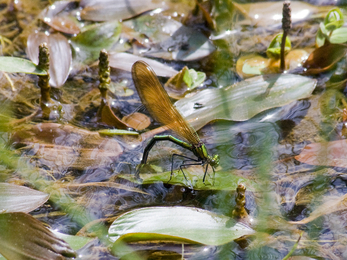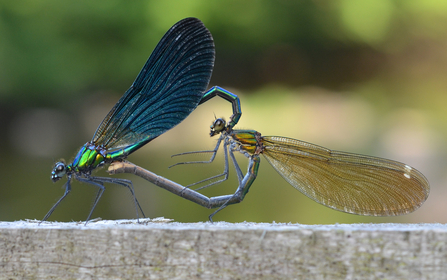Despite being just 4.5cm long, banded demoiselles and beautiful demoiselles are Britain’s largest damselflies. Often mistaken for their dragonfly relatives, these insects form their own group within the order Odonata. Easy ways to spot the difference are their slender bodies and slow, gentle, fluttery flight. Damselflies also fold their wings vertically when resting, while dragonflies hold theirs out to the side.
Another wing-related clue is that, for damselflies, both pairs are roughly the same size and shape. Dragonflies, by contrast, tend to have hindwings (nearer the tail) that are broader and shorter than their forewings (nearer the head). This is reflected in the names of their sub-orders: Zygoptera (damselflies) means "even/paired wings", while Anisoptera (dragonflies) means "uneven/unequal wings".
If you can get a closer look, you might see another key distinction. Both dragonflies and damselflies have short antennae, and so rely on their sight to navigate and find food. Their eyes have a compound structure comprised of many tiny lenses, which gives them a very wide view of their surroundings. But while dragonfly eyes often meet in the middle, damselflies have eyes on the sides of their heads.
Pictured below from left to right (click to expand): Male banded demoiselle / Female banded demoiselle / Male and female beautiful demoiselles.







